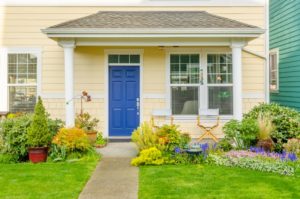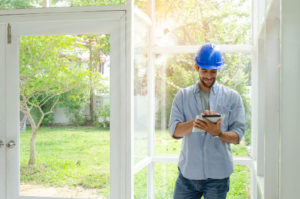- Regularly maintain roof and chimney to prevent water seepage, rot, or debris build-up.
- Check wooden elements such as doors, windows, stairs, and flooring for signs of wear and tear.
- Install a cap on chimneys to prevent animals from nesting within them.
- Inspect insulation regularly for deterioration or compression to maintain the desired temperature and reduce energy costs.
- Refinish wooden elements like doors and floors for aesthetic appeal and protection against scratches.
Living in a traditional home comes with many benefits. Not only are they often aesthetically pleasing, but these homes also typically feature well-built construction that stands the test of time and requires less maintenance than newer homes.
Traditional homes are usually constructed with more substantial materials than modern ones. This means these homes last longer and can withstand extreme weather better than newer, more flimsy houses. Traditional brick, stone, or mortar construction also helps regulate the home’s temperature, making it more energy-efficient and cost-effective for homeowners.
Additionally, traditional homes typically have fewer technological features and appliances that must be maintained and upgraded. With fewer outlets, wiring systems, or appliances like ovens or refrigerators needing regular service, there is less upkeep required for managing a traditional home. This can save homeowners significant money over time on repairs and upgrades and avoid costly replacements of outdated items.
Still, maintaining a traditional home can be challenging, especially for homeowners with little knowledge of construction or home repair. Here are a few critical areas of maintenance homeowners should consider:
Roof and Chimney

The roof and chimney of a traditional home must be regularly maintained to ensure its long-term structural integrity. Over time, weathering can lead to damage from water seeping into the roof or chimney, which can cause rot and weaken the structure. Additionally, crevices and cracks that form on the house’s exterior due to age may need to be filled to prevent further damage over time.
Homeowners should inspect their roofs and chimneys annually for any signs of wear and tear. It is important to note that repairs should not just focus on visible damages such as cracks or holes; it is also essential to look for underlying signs like water stains or moss growth, which indicate more severe damage. Repairs may include replacing shingles/tiles, removing debris from gutters, filling in cracks or crevices with sealant, and patching holes with mortar or cement.
In regards to the chimney, regular cleaning is necessary to remove built-up soot and ash before it causes blockages that can cause smoke backflow into the home. The brickwork around the vent should also be inspected for any loose bricks that could fall off. Furthermore, it would be advisable for homeowners to install a cap on top of their chimneys to prevent birds or other animals from entering and nesting within them.
Of course, you might need professional chimney repair contractors to do the job. Going up the chimney is dangerous, and leaving it to the experts is best.
Woodwork
Traditional homes have lots of wooden elements because wood is durable, relatively inexpensive, and provides a classic look to any property. Wood also offers excellent insulation, which helps keep homes warmer in winter and cooler in summer. Moreover, many homeowners prefer the warmer aesthetic that wood brings to their homes.
Below are some areas of wooden repair that should be addressed regularly for traditional homes:
Doors
Doors are essential for maintaining security and privacy in any home and must be inspected regularly for damage or wear and tear. Homeowners should inspect all entries to ensure the hardware functions correctly or replace it if necessary. Furthermore, they should check the locks on interior and exterior doors to ensure they are secure. Additionally, entries may need sanding or refinishing if they become scratched, chipped, or faded due to weathering or sun exposure.
Windows
Windows can be an expensive investment when replacing them in a traditional home due to their size and complexity of construction compared to those in modern-day properties. Homeowners must inspect their windows regularly for signs of water leakage or drafts, which could lead to higher energy costs over time and water damage within the home’s walls or framing. Additionally, frames and hinges should be checked for proper fitment to function correctly when opening and closing windows.
Stairs
Stairs provide movement throughout a house but can also pose safety hazards when not appropriately maintained over time due to wear from foot traffic or weathering conditions like extreme temperatures or moisture levels within the home’s environment. Wooden stairs should be inspected regularly for loose boards, splits, cracks, joint separations, squeaks, or creaks, contributing to instability within the stairs’ structure.
Flooring
Wooden flooring can last longer than many other materials with proper care and maintenance over time; however, it may still require refinishing to maintain its shine/luster aesthetically speaking and protects against scratches caused by furniture movements, etc.
Insulation

Insulation is an essential element of a traditional home, as it is critical in maintaining comfortable temperatures throughout the house. Insulation helps to regulate the indoor temperature by preventing hot or cold air from entering or exiting the home. Additionally, insulation can help reduce energy costs by reducing the energy needed to maintain a desired temperature while decreasing noise levels within the home.
Regularity is vital in insulation maintenance for traditional homes, as time and wear can damage its effectiveness. Homeowners should check their insulation regularly for any signs of deterioration or compression, which can decrease its R-value and thermal performance over time. Furthermore, older properties may need more insulation than newer houses due to more substantial construction materials used in their builds that have naturally higher heat loss rates than modern homes with lighter-weight materials.
Final Thoughts
Maintaining a traditional home has many benefits but also requires significant upkeep to ensure longevity. Homeowners should inspect their roofs and chimneys annually for any signs of damage, check their wooden doors and windows for proper fitment and water leakage, inspect stairs regularly for instability, keep the flooring clean and polished, and check insulation for deterioration or compression. Taking the time to maintain these areas can help prolong the life of your traditional home and save you money on costly repairs down the road.












